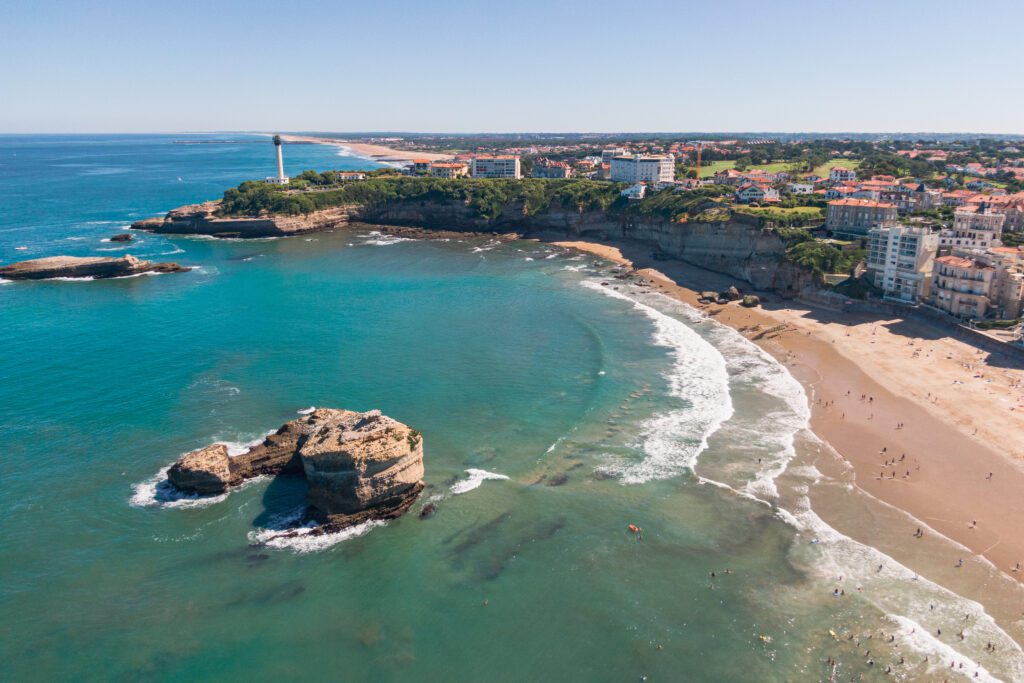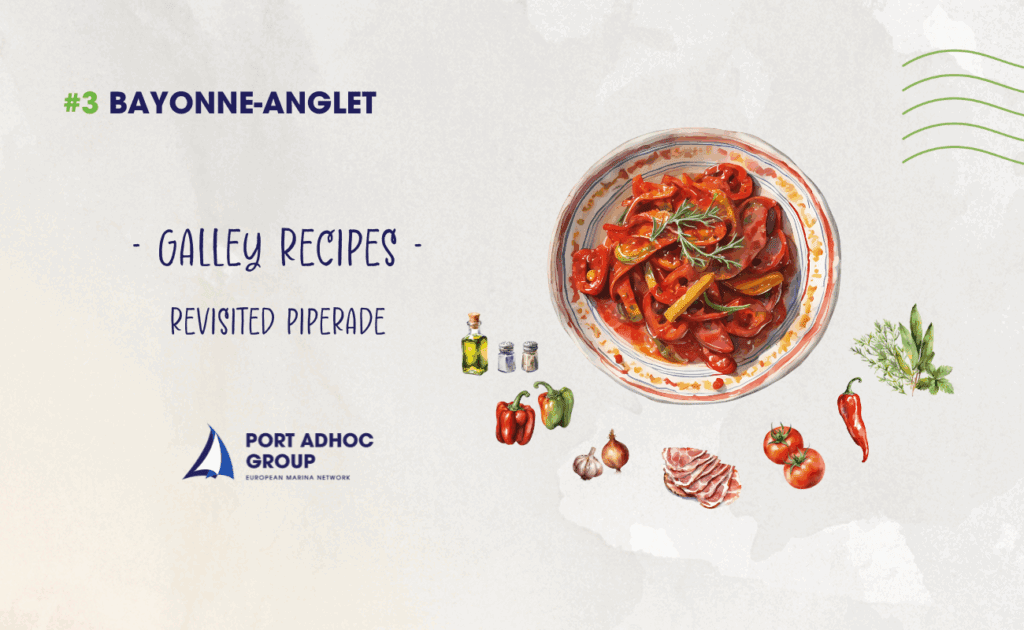Publication date: 05/26/2025
Port Adhoc Bayonne-Anglet: a tailor-made dry stack marina
Nestled between sea and forest, Port Adhoc Bayonne-Anglet offers a dry stack marina open 7 days a week, ideally located for both sea and river navigation. With 210 racks, 30 cradles, 80 metres of private pontoons, and free parking, everything is designed for quick and easy access to your boat.

Heading for the Basque Country and the Pyrénées-Atlantiques
Situated between the ocean and forest, Anglet is a coastal gem ideally placed between Bayonne and Biarritz. Its port on the River Adour is a prime starting point for boating enthusiasts, whether at sea or on the calm inland waters of the Adour. Set sail across the Bay of Biscay towards the Gironde Estuary, head to Spain with Bilbao and La Coruña in your sights, or venture further towards Portugal. For a gentler escape, cruise upriver along the Adour and discover a network of waterways stretching nearly 150 km, reaching Lahonce, Urt, Lanne, or Guiche—depending on the tides and your boat’s draught.
An exceptional setting between ocean and nature
Anglet also boasts an unspoilt coastline with 11 sandy beaches, a famous cliff road, and world-class surf spots. Nature lovers can unwind on the golf courses of L’Impératrice and Chiberta, offering 9 and 18 holes in a unique setting. For a moment of well-being, head to the Atlanthal thalassotherapy centre in Anglet. Those drawn to nature can explore the Izadia Ecological Park.

An exceptional setting between ocean and nature
Biarritz welcomes you with its legendary seafront, the Rocher de la Vierge, and its large beach. Shopping, culture, gastronomy, and nightlife offer a wide range of activities.
Not far away, Bayonne captures the soul of the French Basque Country. A city of art and history, it invites you to explore its UNESCO-listed Sainte-Marie Cathedral, lively historic centre, fortified walls, and Basque Museum.
The Basque art of living through a few flavours
Bayonne chocolate
Bayonne is a city of indulgence. Its chocolate museum showcases four centuries of passion for cocoa, embodied by historic houses such as Cazenave (since 1854), Daranatz (1890), and Pariès (1895).
💡 Did you know that Bayonne is considered the historical capital of chocolate in France? This delicious tradition began in the 17th century, thanks to Spanish and Portuguese Jews fleeing the Inquisition. Taking refuge in the South-West of France, they brought with them precious know-how: roasting and grinding cocoa beans.
Bayonne thus became the first French city to master the art of chocolate-making, long before Paris or Lyon. Quickly adopted by local master chocolatiers, this tradition is still alive today in the workshops of the iconic establishments mentioned earlier – true institutions of Bayonne.

A visit to the Bayonne Chocolate Museum, or a gourmet break in one of these historic tea rooms, will take you back in time while you savour a cup of frothy hot chocolate prepared the traditional way.
➡️ A few must-visit places:
The Ossau-Iraty
Ossau-Iraty is no ordinary cheese – it’s a symbol of the Basque Country and Béarn, and one of the rare uncooked, pressed ewe’s milk cheeses to benefit from Protected Designation of Origin (PDO) status since 1996.
It takes its name from two iconic valleys: the Ossau Valley (in Béarn) and the Iraty Forest (in the Basque Country). For centuries, transhumant shepherds have upheld a demanding pastoral tradition, using only raw or pasteurised milk from local ewes (Manech or Basco-Béarnaise breeds).
The result: a cheese with nutty notes, a melting texture, and a stronger aroma as it matures.
Three main stages of ageing are usually available:
- Young (3–4 months): mild and milky
- Optimum (6–8 months): balanced and fruity
- Aged (8+ months): strong and full-flavoured

Traditionally, it is served with Itxassou black cherry jam – a sweet-and-savoury pairing that’s a hallmark of Basque cuisine. It is also increasingly used in cooking, like in our savoury cheesecake recipe, combining local tradition with a modern twist.
➡️ Where to enjoy Ossau-Iraty?
- Les Halles de Bayonne
- Maison Accoceberry, in Bayonne, Biarritz, or Espelette
- Halles des 5 Cantons, Anglet
Recipe: Revisited Piperade
Ingredients (serves 4)
- 4 peppers (red, green, yellow)
- 2 ripe tomatoes
- 1 sweet onion
- 2 garlic cloves
- 100 g of Bayonne ham, thinly sliced
- 1 tbsp olive oil
- A pinch of salt, pepper, and Espelette pepper
Required equipment
- Frying pan or sauté pan
- Chopping board
- Kitchen knife
Preparation
- Slice the peppers into strips and dice the tomatoes.
- Sauté the chopped onion and garlic in olive oil.
- Add the peppers, cook for 10 minutes, then stir in the tomatoes.
- Season with salt, pepper, and Espelette pepper.
- Serve hot or cold with slices of Bayonne ham.
Recipe: Savoury Cheesecake with Ossau-Iraty
Ingredients (serves 4)
For the biscuit base:
- 150 g of shortbread biscuits (such as speculoos or Breton galettes)
- 50 g of melted butter
For the filling:
- 700 g of Ossau-Iraty (young or optimum)
- 350 g of single cream
- 150 g of black cherry jam from Itxassou
- A pinch of Espelette pepper
Required equipment
- Food processor or rolling pin
- Saucepan
- Whisk
- Cheesecake tin
- Fridge
Preparation
- Crush the biscuits and mix with melted butter. Press the mixture into the bottom of the cheesecake tin and chill for 30 minutes.
- Cut the Ossau-Iraty into cubes and gently melt with the cream over low heat, stirring regularly.
- Pour the mixture onto the biscuit base and chill in the fridge for 12 hours.
- Once set, remove from the tin, spread a thin layer of black cherry jam over the top, and sprinkle each slice with a pinch of Espelette pepper.
If you try these recipes – on land or aboard – share your photos with the hashtag #GalleyRecipes!

